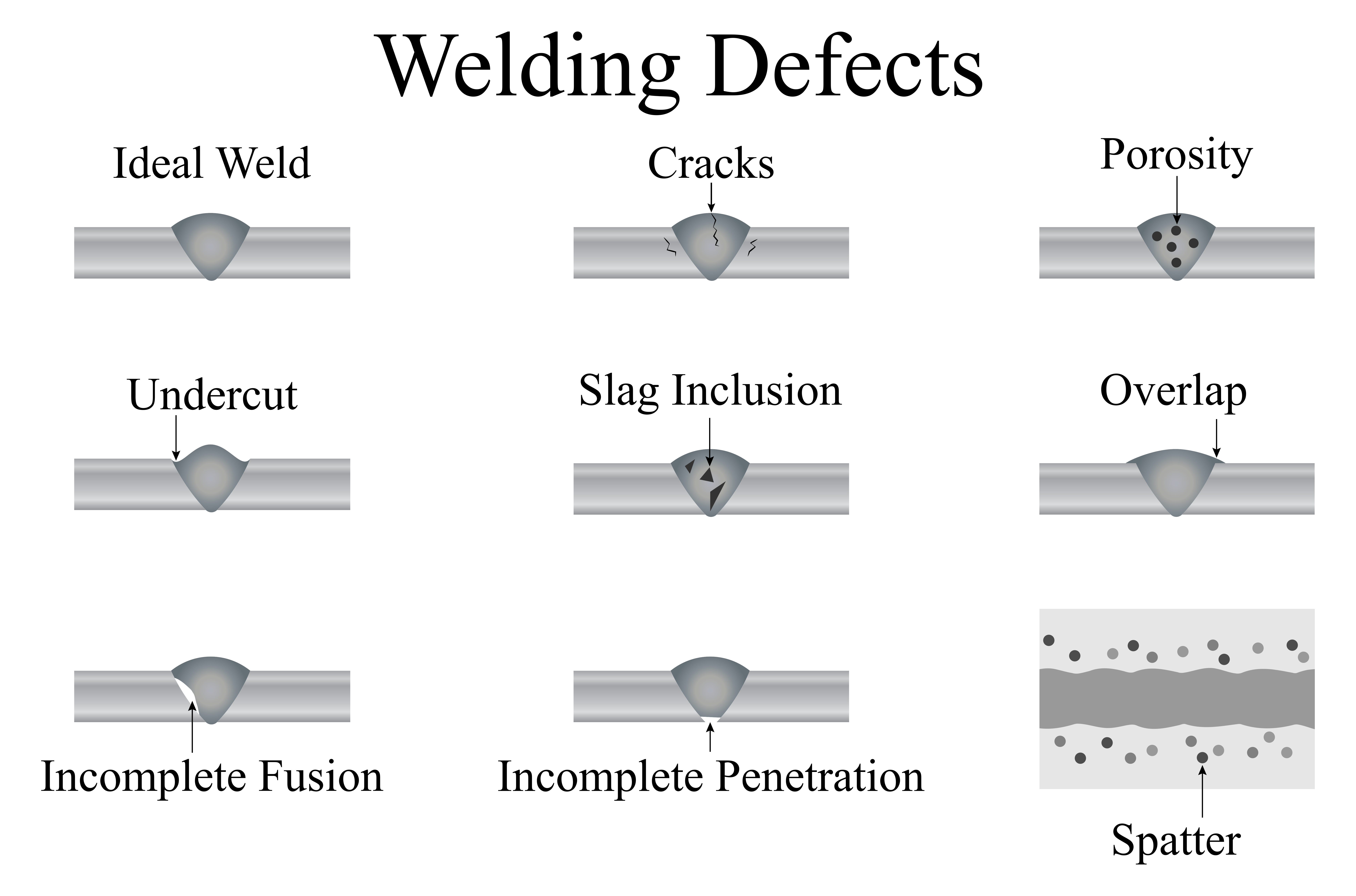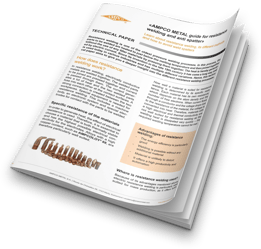Weld spatter occurs during welding, causing extra costs, equipment damage, and safety risks. AMPCOLOY® is a copper-based alloy with high resistance to heat and wear that prevents spatter by reducing surface adhesion.
Weld spatter is the term used to describe the small droplets of molten metal that can be produced during welding. When a welder melts metal to fuse two pieces, some molten metal can splash or spray out of the weld pool and onto the surrounding surfaces. This molten metal quickly solidifies upon contact with the surface, forming small droplets that adhere to the workpiece, equipment, and other nearby surfaces. These droplets can be sharp, hot, and difficult to remove, making them a common problem in welding operations.
The parts of a welding fixture, such as clamps and fixtures, are often made of steel. Steel is a great material, but it has its downsides regarding thermal conductivity. By replacing these steel parts with parts made of AMPCOLOY®, weld spatter can be reduced to a minimum as weld spatter cool down very quickly after hitting the AMPCOLOY® parts. This results in an increased lifespan of welding equipment and, therefore, fewer downtimes, further enhancing productivity.
What causes weld spatters?
Weld spatter can be caused by several factors, including the type of welding process, the metal being welded, and the welding conditions. Welding processes that rely on a separate substance to act as a bonding agent, such as MIG (Metal Inert Gas) and TIG (Tungsten Inert Gas) welding, are more prone to spatter than others. However, weld spatter may also occur in resistance welding, which is often a sign of a defective weld.

Image: Possible welding defects – including weld spatter
Weld spatter is not only annoying to deal with but also carries several financial risks. For example, weld spatter can lead to extra cleaning and rework costs, as it can affect the appearance and quality of the weld. This can increase the time and labor required to complete a welding project, leading to additional costs. Furthermore, weld spatter can damage welding equipment leading to increased maintenance and repair costs. It can also cause equipment downtime, further increasing costs due to lost productivity and missed deadlines.
Lastly, weld spatter can create safety and health risks for welders and other workers. It can cause eye and skin irritation, as well as respiratory problems. These health risks can increase medical expenses and workers’ compensation costs.
How can weld spatter be prevented?
Besides setting your parameters right, selecting an alloy for your welding equipment with great heat conductivity is the most efficient way to avoid welding spatters. As copper offers great heat conductivity and other useful properties, welding equipment made of copper alloys is a great way to prevent weld spatters. Whenever there is wear and mechanical stress present, you might consider using an alloy that, besides offering great heat conductivity, also thrives when it comes to wear resistance. One alloy that comes to mind is AMPCOLOY®. For example, AMPCOLOY® 83, AMPCOLOY® 95 or AMPCOLOY® 940 are great options for clamps and fixtures.
 Image: AMPCOLOY® Resistance welding wheel
Image: AMPCOLOY® Resistance welding wheel
AMPCOLOY® is a high copper alloy that is often used in welding applications. One of the main benefits of using AMPCOLOY® in welding is its ability to reduce weld spatter. The unique composition of AMPCOLOY® makes it highly resistant to heat and wear, which helps prevent spatter from sticking to the contact tip and blocking the wire. This reduces the spatter produced during welding and helps produce a cleaner, higher-quality weld. In addition to reducing spatter, AMPCOLOY® also offers other benefits in welding applications. It has excellent electrical and thermal conductivity and offers high corrosion and wear resistance, making it a durable and long-lasting material for welding equipment.
For further information about resistance welding, please download our free «AMPCO METAL guide for resistance welding and anti-spatter»





